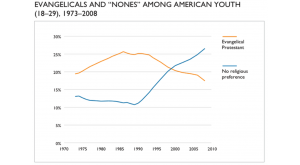The following post is by Alex Blondeau. Alex is a Ph.D. student in theology at Luther Seminary in St. Paul, MN. Alex’s research focuses on the paradox of salvation in Paul Tillich’s philosophy of religion and as exemplified in the psychotherapeutic spiritual Christology of Sebastian Moore. He blogs “on living through death” at blondeau.wordpress.com. Alex can also be found on Twitter at @alex_blondeau
This morning, after the kids were pretty much all set to go for the day, I flopped down on our bed as the sun was just beginning to cast a warm window-shaped glow on our bedroom wall. As I sometimes do, I picked up a book I’ve been reading and randomly opened it up to see what it could teach me. My mind has been churning ever since.
The book was Cynthia Bourgeault’s Centering Prayer and Inner Awakening. The passage I flipped to was dealing with a method of prayer developed by Thomas Keating and others called the Welcoming Prayer. The insight contained therein is overwhelming.
The method of prayer itself is deceptively simple. It is a prayer used throughout one’s day and it is practiced whenever you note that you are beginning to feel agitated (hopefully you feel agitated periodically. If you don’t you have even bigger issues!). There are three steps:
1. Focus and Sink In

2. Welcome
3. Let Go
Prayer always runs the risk of becoming a tool of repression. The Welcoming Prayer goes in exactly the opposite direction. It is designed to get us to notice what is happening in us before it gets “whisked into the unconscious” where it piles up as psycho-physical garbage.
The first step (surprisingly difficult for some) is to simply notice the upset in your bodily sensations. Don’t struggle to change them; pay attention to them. Sink into them. The second step is where the magic happens. Rather than trying to combat the turbulence within you or otherwise remove it, you welcome it. The goal is not to remove the upset but to stop the upset from having the power to compel your actions.
“By embracing the thing you once defended yourself against or ran from, you are actually disarming it, removing its power to hurt you or chase you back into your smaller self.” Bourgeault, 145.
The third step then happens almost by itself.
What strikes me as so radical about this form of prayer is the paradoxical way that it works to defuse the dynamics that cause nearly all of our social and personal conflicts. We act from compulsion, and therefore live in un-freedom, when we act out of fear. And fear is a constant feature of our lives. We fear losing goods we have and we fear not getting goods we want. (a great example of this is Eddie Vedder’s recent feeling of his own mortality. Fear, when embodied, becomes our enemy. Welcoming prayer addresses the problem of the enemy by first confronting our own fears with a sort of mental hospitality.
But what of the ultimate fear, the ultimate enemy: death?
Is not, as Ernest Becker insisted, fear of death so all-pervasive and so deep that there is really no way for us to cope other than by systems of repression and therefore compulsion and un-freedom? If Becker is right, life itself becomes the enemy, for we cannot escape the fear of losing it, and along with it, all the meanings it contains for us. That’s the million dollar question, it seems to me. What does prayer look like when we stop praying against death (and thereby granting death its power) but instead, focus on our fear of death, welcome that fear, and by doing so release it. What kind of life, what kind of courage, would be possible, once our enemy has been disarmed?
You have heard that it was said, ‘You shall love your neighbor and hate your enemy.’ But I say to you, Love your enemies and pray for those who persecute you” Mt. 5:43-45
You have heard it was said, ‘An eye for an eye and a tooth for a tooth.’ But I say to you, Do not resist an evildoer. But if anyone strikes you on the right cheek, turn the other also; and if anyone wants to sue you and take your coat, give your cloak as well; and if anyone forces you to go one mile, go also the second mile. Give to everyone who begs from you, and do not refuse anyone who wants to borrow from you. Mt. 5:38-42











